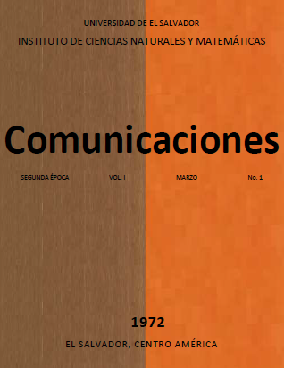Divergencia genética como resultado de adaptación a alturas diferentes en Rana neotropicales del grupo Rana pipiens
Keywords:
Ranas neotropicales, Rana pipiensAbstract
Frogs classified as Rana pipiens represent a group of closely related species. In this study, four populations belonging to this group, but inhabiting different environments at different altitudes in Costa Rica were compared in respect to (1) norphological variation and (2) reproductive compatibility. No cline was evident in the shape of the snout, but a significant decrease in size of both sexes was found to occur in a clinal manner with increase in altitude. Artificial crosses indicate a significant decrease in reproductive compatibility between the high-altitude population and those inhabiting lower altitudinal zones. It is proposed that the clinal change in size and the reduced viability of ''hybrids" between parents from high and low altitude populations may indicate a genetic divergence and formation of a new species in process by the frogs inhabiting the summit of Volcán Turrialba. Speciation by this mechanism may be occurring throughout the isthmus of Central America on numerous semi-isolated mountains and volcanoes.
Downloads
References
Anónimo. "Anuario Meteorológico". Servicio Meteorológico Nacional, Sección Climatología, Ministerio de Agricultura y Ganadería, San José, Costa Rica, Pág. 1-68, 1965.
Cuénot, L. "L' Evolution Biológique". Masson et Cie, Editeurs, París, 1951
Dobzhansky, T. "Genetics and the Origin of Species". Columbia University Press, New York, Pág. 1-364, 1937.
Holdridge, L. R. "Life Zone Ecology". Tropical Science Center, San José, Costa Rica, Pág. 1-206, 1964.
Littlejohn, M. J., y Oldham, R. S. "Rana pipiens" Complex: Mating Call Structure and Taxonomy'', Science. No. 3857, Vol. 162, Pág. 1003-1005, 1968.
Mayr, E. "Animal Species and Evolution". Belknap Press of Harvard University Press,. Cambridge, Massachusetts, Pág. 1-797, 1963.
Mecham, J. S. "Evidence for Reproductive Isolation Between Two Populations of the Frog, Rana pipiens, in Arizona". The Southwestern Naturalist, No. 1, Vol. 13, Pág. 35-44, 1968.
Mecham, J. S. "New Information from Experimental Crosses on Genetic Relationships Within the Rana pipiens Species Group".Journal of Experimental Zoology, No. 2, Vol. 170, Pág. 169-180, 1969.
Moore, J. A. "Patterns of Evolution in the Genus Rana". En: Jepsen, G. L. ,Mayrs E., y Simpson, G. L. (eds.), "Genetics, Paleontology, and Evolution" Princeton University Press, 1949.
Platz, J. -E. "Introgression Between Two Forms of Texas Leopard Frogs, M. S. Thesis, Texas Tech Universiy, Lubbock, Texas, 1970.
Post, D. D., y 'Pettus, D. "Sympatry of Two Members of the Rana pipiens Complex in Colorado'. Herpetologica, No. 4. Vol. 23, Pág. 323, 1967
Post, D.D., y Pettus, D. 'Variation in Rana pipiens (Anura: Ranidae) of Eastern Colorado". The Southwestern Naturalist "no. 4, Vol. 11, Pág. 476-482, 1966.
Ramme, W. "Revisioned und Neubeschreibungen in der Gattung Pholidoptera Wesm. (Orth., Tettigon)", Mitt. Zool. Mus. Berlin, Vol. 16, Pág. 789-821, 1930.
Ruibal, R. "An Altitudinal and Latitudinal Cline in Rana pipiens". Cepeia,no.3, Vol. 1957, Pág. 212- 221, 1957.
Salthe, S. N. "Geographic Variation of the Lactate Dehydrogenases of Rana pipiens and Rana palustris". Biochemical Genetics, Vol. 2, Pág. 271-303, 1969.
Tosí, J. A. "Ecological Map of Costa Rica" Tropical Science Center, San José, Costa Rica- 1965
Downloads
Published
How to Cite
Issue
Section
License

This work is licensed under a Creative Commons Attribution-NonCommercial 4.0 International License.






